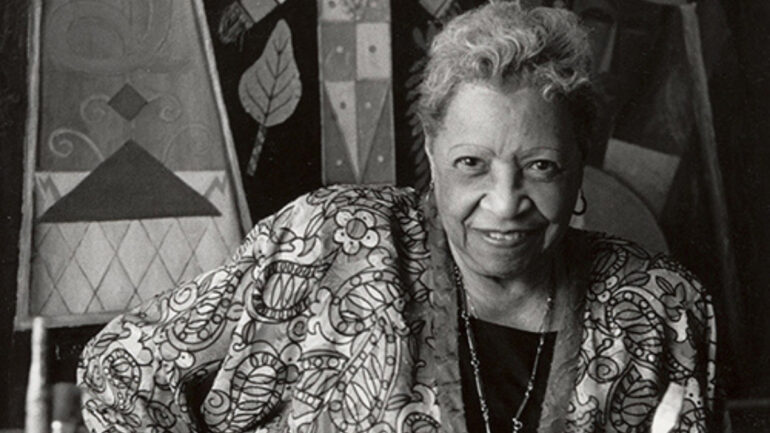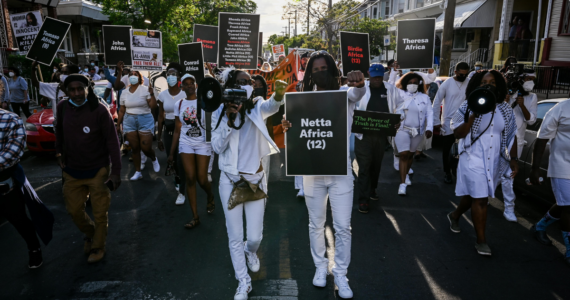Happy Black History Month! What a wonderful month to remember not only our triumphs but also the challenges that have shaped us into the people we are today. We rarely hear about the many Black pioneers who paved the path in so many fields before us. We get caught up in applauding Martin Luther King Jr., Malcolm X, W.E.B Du Bois, Rosa Parks, and other civil rights leaders. They are fantastic for a variety of reasons, but there have been many unrecognized trailblazers who have led in their own manner. As you read, you will discover many black fine artists who have paved the way for others.
Alma Thomas
Alma Thomas is a significant figure in the lives of women and black artists. In 1972, at the age of 81, she became the first African American woman to have a solo exhibition at the Whitney Museum of American Art in New York. She even had three exhibitions of her paintings at the White House. Alma began painting seriously after retiring as an art teacher in Washington, D.C. in 1960. Her art is known for its abstract color and form experiments, which are her signature style.
Elba Lightfoot
Elba Lightfoot was an African-American artist best recognized for her work on the Works Progress Administration murals at Harlem Hospital. Lightfoot formed the Harlem Artists Guild in 1935 with Charles Alston, Augusta Savage, Arthur Schomburg, and others to campaign for equality in WPA art programs in New York. Charles Alston, Georgette Seabrook, Vertis Hayes, Sara Murrell, Selma Day, and Lightfoot were among a group of African American painters who submitted mural designs for Harlem Hospital in New York City in 1936. The murals were accepted by the WPA’s Federal Art Project, however, four of the designs were initially rejected by the hospital administrator, L.T. Dermody.
She was one of the painters who participated in the Tanner Art Galleries in Chicago’s Exhibition of American Negro Art, which was held in conjunction with the American Negro Exposition.
Horace Pippin
Horace Pippin, a self-taught painter, began painting on stretched cloth in the 1930s and frequently returned to war-related themes. He painted landscapes, as well as political and biblical themes, as his career progressed. His art frequently dealt with issues of slavery and racial injustice.
In 1947, he became the first African American artist to have a monograph published. The Metropolitan Museum of Art, the Barnes Foundation, and the Phillips Collection are just a few of the public and private collections where his paintings can be found today.
Augusta Savage
Sculptor, Augusta Savage was born in Florida. She traveled to New York City in 1921 to study at The Cooper Union for the Advancement of Science and Art, which was a scholarship-based institution. She was commissioned by the Harlem Library to construct a bust of civil rights pioneer and writer W. E. B. Du Bois, which put her on the map.
Savage’s Renaissance role is now primarily associated with teaching and advocacy. She co-founded the Harlem Artists Guild in 1935, which provided advice to the neighborhood’s African American artists, and the Harlem Community Art Center in 1937, where she taught sculpting lessons and assisted other African American artists in launching their careers.
Lois Mailou Jones
Lois Mailou Jones was an American painter and educator whose work reflects a mastery of a wide range of styles, from traditional landscapes to abstract paintings with African themes.
Jones has been an outspoken supporter of African-American art’s international success. She has also served as an inspiration to other African-American artists, particularly those who participated in her design and painting classes at Howard University from 1930 until 1977.
Make it a point to research additional prominent Black leaders in our community as we commemorate Black History Month. You will definitely be amazed.
Follow MEFeater on Twitter, Instagram, Facebook, and Pinterest for more updates!



















